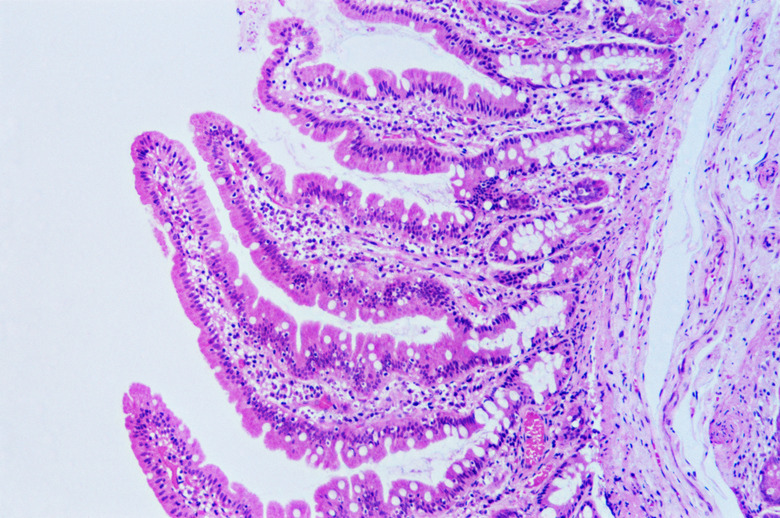What Happens At A Microscopic Level During Homeostasis?
The term **homeostasis** refers to the maintenance of internal stability in response to changes in the external environment. As applied to biological systems, homeostasis can mean at the level of individual cells or at the level of whole organisms.
The term "homeostasis" can also refer to one physiological function or their collective result, e.g., "acid-base homeostasis" vs. "homeostasis" in reference to an entire organism's general functioning.
Because the process requires responses to external agents, cells and organisms must expend energy to maintain homeostasis. In some instances, examples at the microscopic level mimic, and are projected onto, examples at the everyday or "macro" level.
Homeostasis in General
Homeostasis in General
In any system, biological or otherwise, that needs to maintain a certain balance, most disturbances that provoke a response from the host cell or agent act to counter the effects of the external agent. For example, if the sodium concentration of your body fluids rises, your cells "order" your brain to broadcast this state of chemical affairs as thirst. As a result, you drink water, and the sodium concentration falls.
This is how most homeostatic mechanisms operate: on the basis of negative feedback. This kind of feedback is intended to keep a physical or chemical value at a certain level or within a certain range. It normally involves either "turning on" a function or "turning off" the same function. As you'll see, this can take a variety of forms in the human body alone.
Homeostasis: Example
Homeostasis: Example
If your home includes a thermostat, you live in an environment in which temperature is maintained via homeostasis.
Say the thermostat temperature is set at 65°F/18°C. If the temperature drops overnight below these levels, the heat will come on until the temperature rises to the level of the thermostat setting, then shut off. These are everyday events, but how do they happen and how do they relate to homeostasis in living systems?
The above example illustrates the five essential elements of homeostasis in any system:
- Stimulus: The drop in temperature inside the home.
- Receptor: A thermometer in the thermostat.
- Control center: The thermostat signals a source of heat.
- Effector: A furnace or some other form of heat energy.
- Feedback mechanisms: The heat source is instructed to turn off when the temperature returns to the desired level.
Cell Homeostasis
Cell Homeostasis
Cells are the tiniest units of life. In the case of some organisms, such as bacteria, a single cell is the organism, thus establishing that a cell is, by whatever means, representative of life itself. As it happens, the cell has certain qualities that scientists link closely with the state called "life," including maintaining a physical structure, metabolism, reproduction and homeostasis.
The cell has a number of homeostatic mechanisms, but the role of the cell membrane is perhaps the most exemplary. Cells must keep the concentration of key substances inside them, especially electrolytes like calcium, sodium and potassium, within a given range, and ion channels and pumps in the membrane help accomplish this.
Homeostasis in the Human Body
Homeostasis in the Human Body
Your own body exhibits its own means of enforcing homeostasis on various aspects of its internal environment.
**Thermal:** When your body becomes too warm, sensors in the skin and brain alert the part of the brain that can effect a change, in this case by initiating sweating or dilating the skin pores.
**Blood Glucose:** When glucose gets too high, insulin is released by the pancreas to drive it back down. When blood glucose becomes too low, glucagon in released, also from the pancreas, to cajole it back up.
**Excretory System:** When the level of water in your body becomes too low in relation to certain ions, the kidneys work to excrete more of the ions in question while retaining water. If necessary, they can work in the reverse way.
Cite This Article
MLA
Beck, Kevin. "What Happens At A Microscopic Level During Homeostasis?" sciencing.com, https://www.sciencing.com/happens-microscopic-level-during-homeostasis-18622/. 25 June 2019.
APA
Beck, Kevin. (2019, June 25). What Happens At A Microscopic Level During Homeostasis?. sciencing.com. Retrieved from https://www.sciencing.com/happens-microscopic-level-during-homeostasis-18622/
Chicago
Beck, Kevin. What Happens At A Microscopic Level During Homeostasis? last modified August 30, 2022. https://www.sciencing.com/happens-microscopic-level-during-homeostasis-18622/
